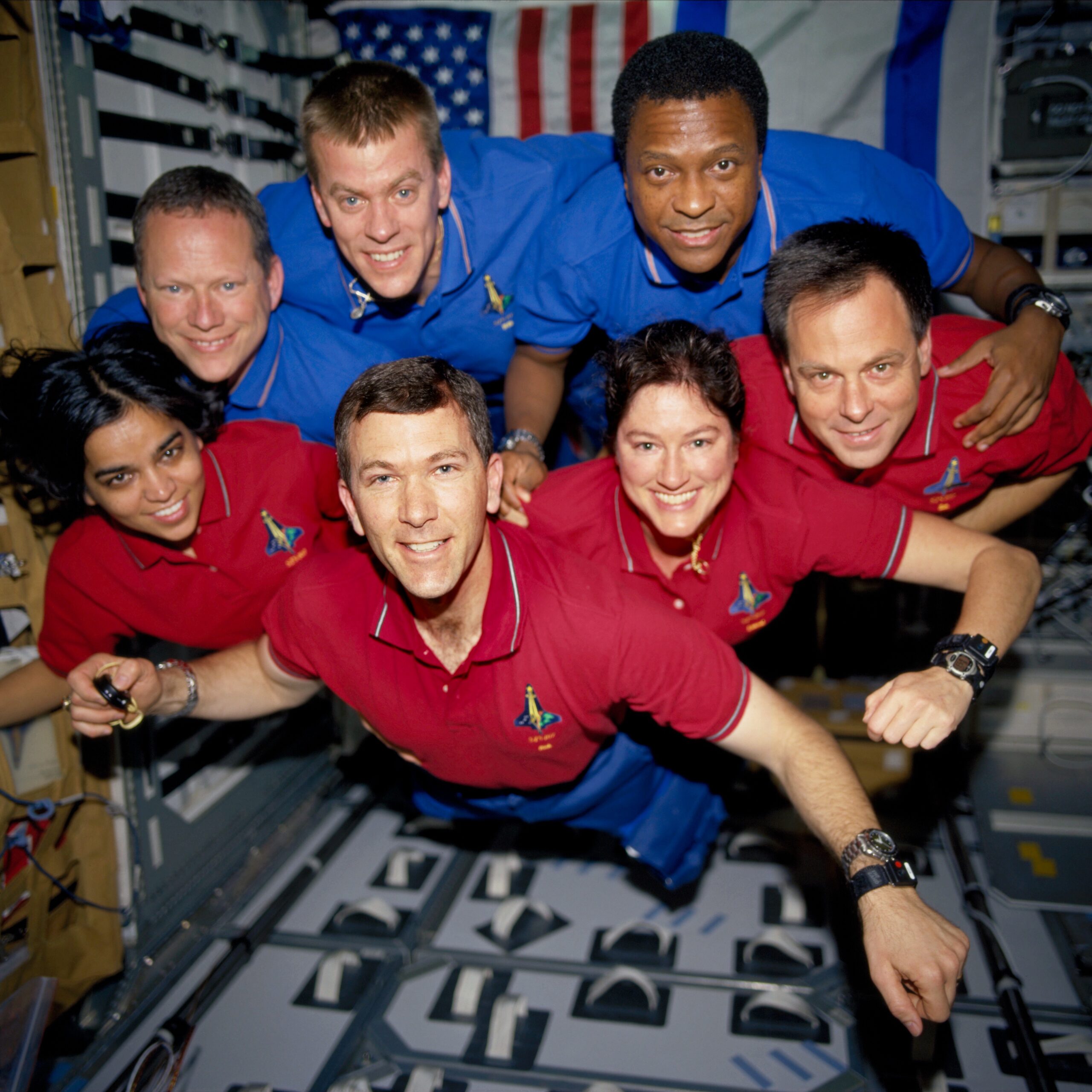Every day students walk through Anderson Plaza without realizing that it is a memorial.
The 20th anniversary of the Columbia Shuttle Disaster is on the first. Aboard that shuttle was Creighton graduate Lt. Col. Michael P. Anderson, who lost his life along with the other members of the crew.
Since childhood, Anderson had wanted to be an astronaut and everything he did in life was to achieve that goal. Anderson chose a career in the Air Force as his route.
Anderson received his master’s degree in physics from Creighton in 1990.
“He was my student in a graduate physics course and I directed his research for his master’s degree in physics, which involved pattern recognition techniques applied to chinchilla brain waves,” said the Rev. Thomas McShane, S.J., in his 2003 tribute following Anderson’s death. “Anderson once told me that his research in pattern recognition at Creighton University played a part in his subsequent selection as an astronaut.”
After winning an award for his work in communication electronics, Anderson was stationed at Offutt Air Force Base in Bellevue. There he became a pilot for the airborne command post for the Strategic Air Command code-named “Looking Glass.” Early in this assignment, Anderson enrolled in graduate school at Creighton to pursue his master’s.
“He is a fine example of an Air Force officer who combined serious responsibility in the Air Force with academic professionalism while working towards his master’s in physics,” McShane said about Anderson following his death.
In 1998, McShane took a group of four Creighton students to Houston where Anderson took the day off work and gave them a behind-the-scenes tour of the Kennedy Space Center. They were able to view control rooms and a large mockup of a space shuttle cockpit as well as see astronauts train.
Anderson’s dream was achieved when he went to space on the space shuttle Endeavor for an eight-day mission in 1998. A group from Creighton including Thomas Zepf, now a professor emeritus of Physics, went to watch Anderson on the Endeavor launch in Cape Canaveral, Florida. A VHS tape of the launch that Zepf took is located in the case in the Hixson-Lied dedicated to Anderson.
“He was really a friendly person,” said Zepf in a phone interview. “Just a happy person. Every time I saw him, he always had a smile on his face. He was certainly enjoying what he was doing.”
Following this mission in 2001, Anderson came back to Creighton to speak about his experience and what it was like in space. Anderson also gifted Creighton a pin that he had taken to space with him, which can be found today in the case in Hixson-Lied.
Tragedy struck Anderson’s second and final 15-day mission to space when the space shuttle Columbia broke up upon re-entry, 16 minutes before its scheduled landing.
Unbeknownst to the crew on board, there was a hole that had developed in the wing of the shuttle and upon re-entry to the atmosphere, it caused a catastrophic failure, killing Anderson and his colleagues. Anderson was 43.
Today, Anderson is remembered at Creighton through Anderson Plaza, located east of the Hixson-Lied Science Building, which was dedicated to him as a memorial in 2004. A bust of the astronaut can be seen in the plaza. The Creighton University Department of Physics has also been awarding the Lt. Col. Michael P. Anderson Academic Scholarship in his honor to physics students since 2004.
Anderson said in a press release, “One of the legacies of NASA is that you always push forward. That’s why NASA was founded —to push human knowledge and experience forward.”
